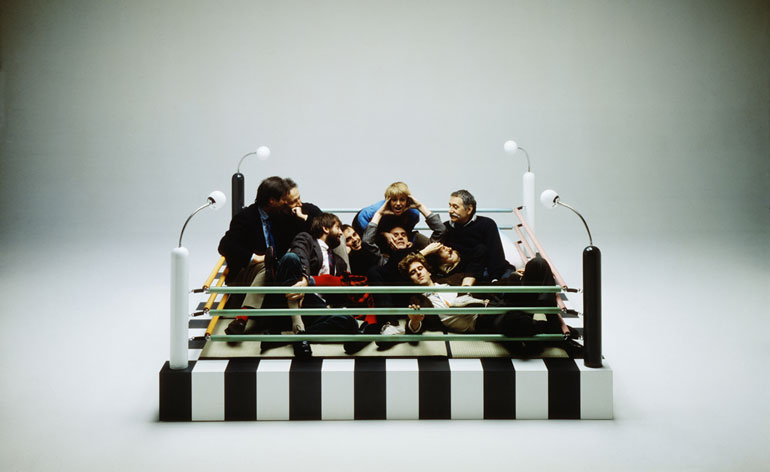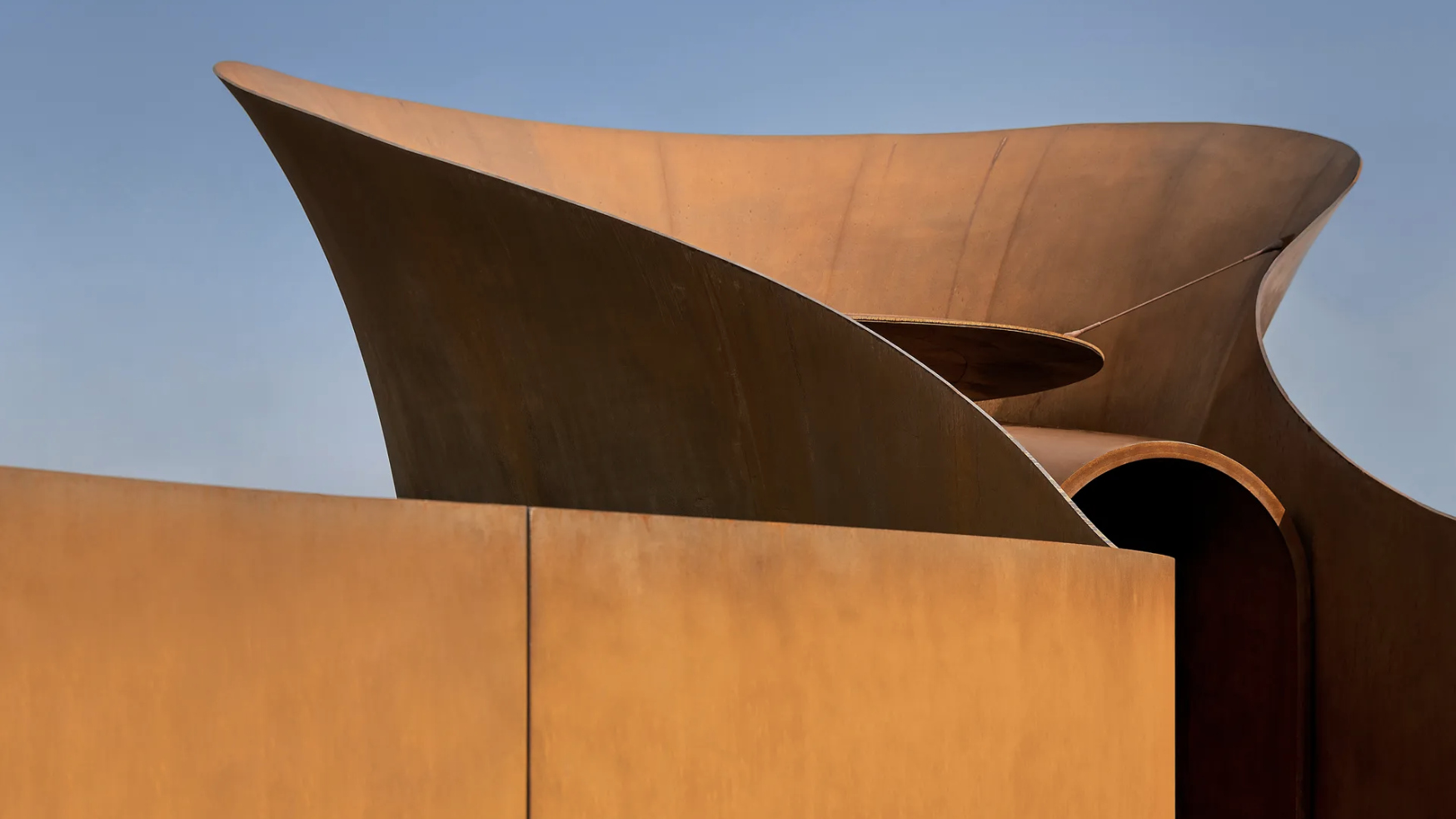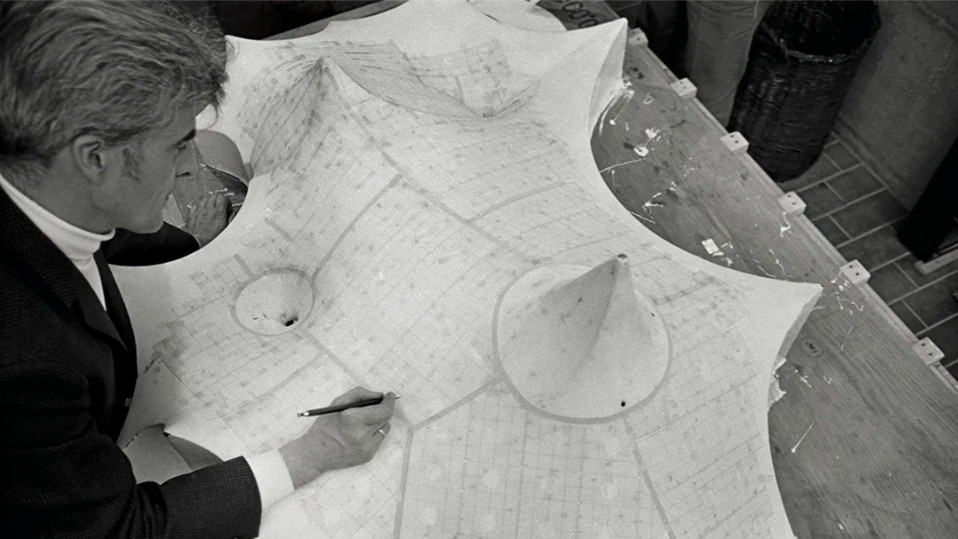David Chipperfield’s James Simon Galerie in Berlin gears up for summer opening

Next summer will see the opening of a sixth building on Berlin’s Museum Island, and the first entirely new building there for almost a century. The James Simon Galerie is named after James Simon (1851-1932) who was one of the great patrons of the German arts. He not only collected and donated a great deal of historical art and objects to the Berlin State Museums, but also funded expeditions to Mesopotamia and Egypt – including the one that brought the bust of Nefertiti to Berlin.
But this new building is not a museum. Designed by David Chipperfield Architects, it will serve as a visitors’ centre for all five museums on the island. The building will provide direct access to the neighbouring Pergamon Museum (home of such treasures as the Ishtar Gate and the Pergamon Altar) and the Neues Museum (home of the Egyptian collection, including that iconic bust of Queen Nefertiti) which was reconstructed by Chipperfield in 2009. The exterior of what appears essentially to be a long, raised colonnade alongside a vast stone staircase belies a surprisingly large interior at ground level and below, which contains a central ticket office and information centre, a cloakroom, museum shop, a café, a 300-seat auditorium and a 700 sq m exhibition space.

The building is made of reconstituted stone with natural stone aggregate blends.
Urs Vogt, the project architect, describes the James Simon Galerie as ‘landscape architecture', essentially a ‘welcoming public space' that allows access and provides visitors with a place to hang out and enjoy the city views, as well as use the facilities before and after entering the museums. It will not be the only entrance and exit – all the museums will retain their current ticket offices and facilities – but it will be the first port of call for large groups and coach parties so, put bluntly, the building is a transit space. One that will relieve the pressure on the historical buildings and help control the flow of the traffic of a projected six million tourists per year.
As such, the materials selected by the architects have been chosen to last, but they are of superb quality and there is a sense that no expense (of the 134 million euro budget) was spared in this respect. The main building is precast concrete with a special aggregate of local marble, sandblasted by hand to give attractive variations in the surface quality. The floors are limestone or dark oak parquet. The huge reinforced glass window panels are framed in bronze, the door handles and handrails are also bronze, and the wood panelling of the shop and cloakroom areas is lavishly-patterned walnut veneer. Additional materials are thick felted wool-covered bench seating and huge floor-to-ceiling Kvadrat grey wool curtains as well as softly burnished copper mesh ceiling panels in the café area.
This luxurious interplay of simple materials, combined with views of the surrounding buildings provided by strategic openings cut into the monolithic concrete, could be seen as signature Chipperfield: the classical historical allusion is powerful but not dictatorial or defined, rather, the modern and past intersect one another continually.

The structure acts as a gateway and entrance building to the Island.

The studio created a design that serves as a continuation to Friedrich August Stüler’s nearby architecture.

A staggering of volumes ensures that the new building doesn't obstruct any important views.
INFORMATION
For more information visit the website of David Chipperfield Architects
Receive our daily digest of inspiration, escapism and design stories from around the world direct to your inbox.
-
 The new Tudor Ranger watches master perfectly executed simplicity
The new Tudor Ranger watches master perfectly executed simplicityThe Tudor Ranger watches look back to the 1960s for a clean and legible design
-
 This late-night hangout brings back 1970s glam to LA’s Sunset Boulevard
This late-night hangout brings back 1970s glam to LA’s Sunset BoulevardGalerie On Sunset is primed for strong drinks, shared plates, live music, and long nights
-
 How Memphis developed from an informal gathering of restless creatives into one of design's most influential movements
How Memphis developed from an informal gathering of restless creatives into one of design's most influential movementsEverything you want to know about Memphis Design, from its history to its leading figures to the pieces to know (and buy)
-
 Doshi Retreat at the Vitra Campus is both a ‘first’ and a ‘last’ for the great Balkrishna Doshi
Doshi Retreat at the Vitra Campus is both a ‘first’ and a ‘last’ for the great Balkrishna DoshiDoshi Retreat opens at the Vitra campus, honouring the Indian modernist’s enduring legacy and joining the Swiss design company’s existing, fascinating collection of pavilions, displays and gardens
-
 ‘Brutalist Berlin’ is an essential new guide for architectural tourists heading to the city
‘Brutalist Berlin’ is an essential new guide for architectural tourists heading to the cityBlue Crow Media’s ‘Brutalist Berlin’ unveils fifty of the German capital’s most significant concrete structures and places them in their historical context
-
 A new book delves into Frei Otto’s obsession with creating ultra-light architecture
A new book delves into Frei Otto’s obsession with creating ultra-light architecture‘Frei Otto: Building with Nature’ traces the life and work of the German architect and engineer, a pioneer of high-tech design and organic structures
-
 What is Bauhaus? The 20th-century movement that defined what modern should look like
What is Bauhaus? The 20th-century movement that defined what modern should look likeWe explore Bauhaus and the 20th century architecture movement's strands, influence and different design expressions; welcome to our ultimate guide in honour of the genre's 100th anniversary this year
-
 Step inside Clockwise Bremen, a new co-working space in Germany that ripples with geological nods
Step inside Clockwise Bremen, a new co-working space in Germany that ripples with geological nodsClockwise Bremen, a new co-working space by London studio SODA in north-west Germany, is inspired by the region’s sand dunes
-
 Join our world tour of contemporary homes across five continents
Join our world tour of contemporary homes across five continentsWe take a world tour of contemporary homes, exploring case studies of how we live; we make five stops across five continents
-
 A weird and wonderful timber dwelling in Germany challenges the norm
A weird and wonderful timber dwelling in Germany challenges the normHaus Anton II by Manfred Lux and Antxon Cánovas is a radical timber dwelling in Germany, putting wood architecture and DIY construction at its heart
-
 A Munich villa blurs the lines between architecture, art and nature
A Munich villa blurs the lines between architecture, art and natureManuel Herz’s boundary-dissolving Munich villa blurs the lines between architecture, art and nature while challenging its very typology